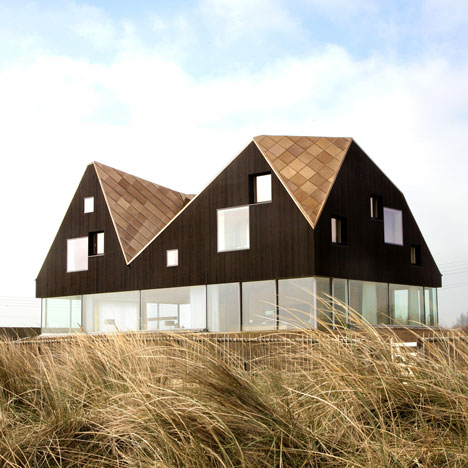
Dune House by Jarmund/Vigsnæs Architects and Mole Architects
The third completed house in Alain de Botton’s Living Architecture series has a faceted black upper storey that sits on top of the glass-walled ground floor like a big hat.
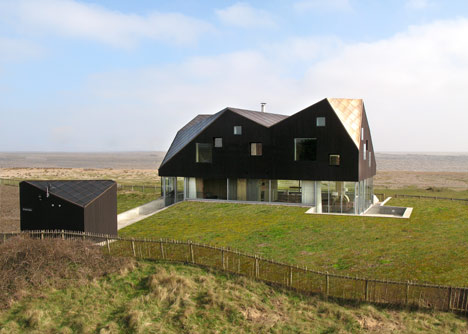
Located on the seafront in Suffolk, England, the two-storey Dune House by Norwegian Architects Jarmund/Vigsnæs has an open-plan ground floor that is entirely surrounded by clear glass.
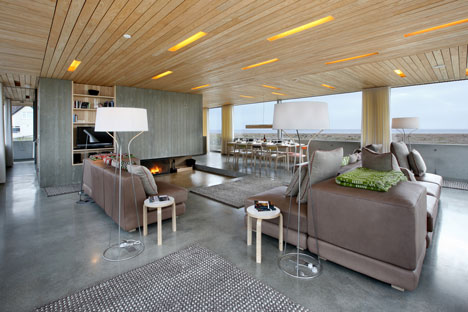
The zigzagging mansard roof encases the building’s first floor and is clad with dark-stained timber that is typical of gabled barn-like buildings in the area.
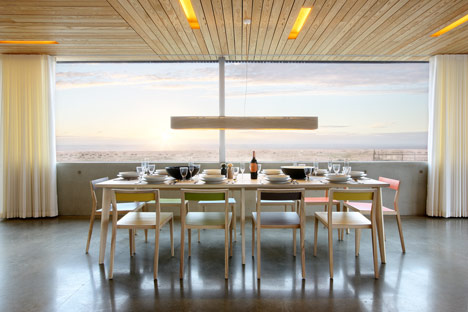
Contrasting metallic panels cover the faceted surfaces of the wooden roof, which pitches up and down around four triangular bedrooms and a library.
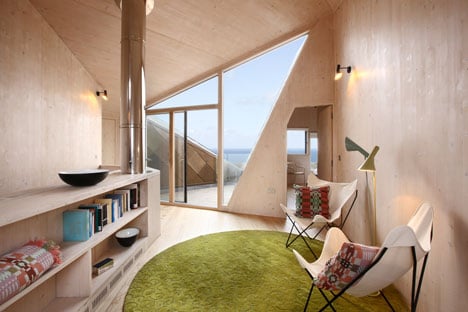
Grass-covered dunes surrounding the house protect the ground floor rooms and terraces from strong sea winds.
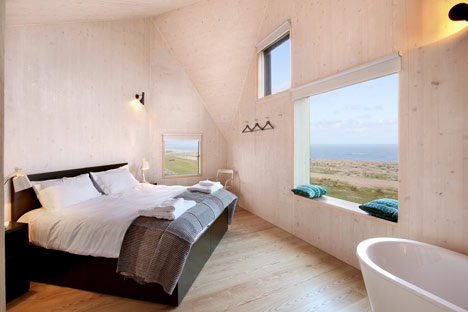
British studio Mole Architects collaborated on this project, as they did with Balancing Barn, the first completed house in the series.
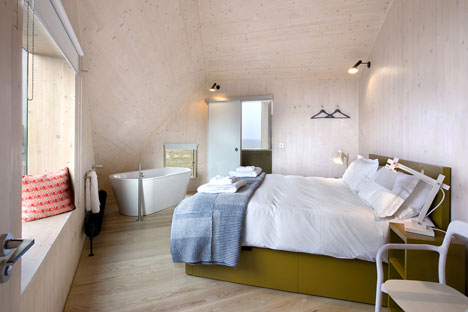
Living Architecture is a series of holiday homes around the UK designed by established and emerging architects – see more about Living Architecture here.
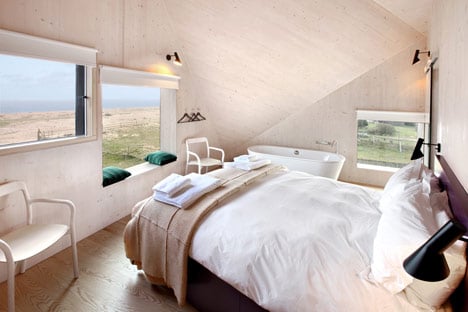
Photography is by Chris Wright.
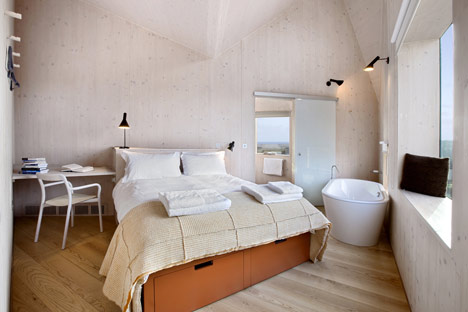
Here's a little more information from Mole Architects:
Dune House
The house is situated in Thorpeness, England on the Suffolk coast, replacing an existing building at the site. The house is a holiday house for rental and is part of Living Architecture.
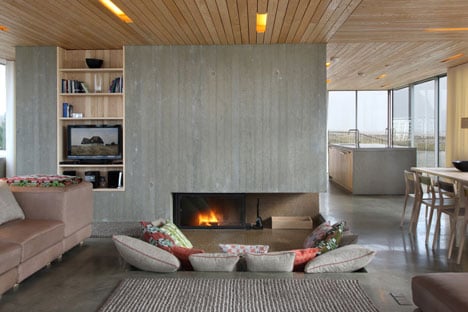
To get a planning permission it was important to relate to the existing, typical, British seaside strip of houses. The roofscape, the bedroom floor, somehow plays with the formal presence of these buildings, and also brings into mind a romantic remembrance of holidays at bed- and breakfasts while traveling through the UK.
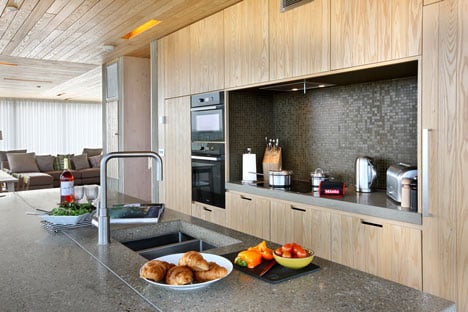
The ground floor is contrasting this by its lack of relationship to the architecture of the top floor.
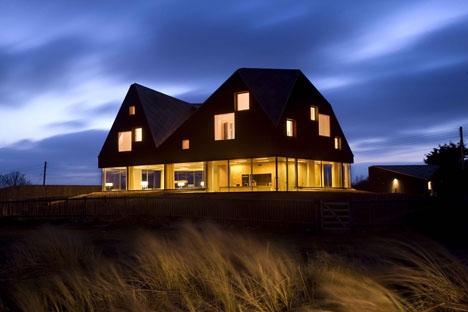
The living area and the terraces are set into the dunes in order to protect it form the strong winds, and opens equally in all directions to allow for wide views. The corners can be opened by sliding doors; this will emphasize the floating appearance of the top floor.
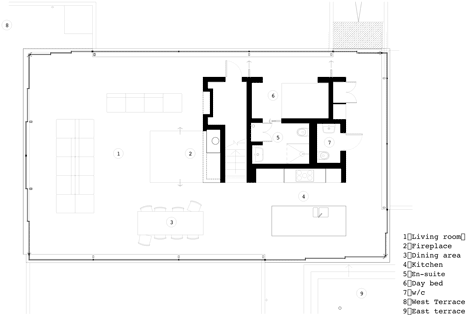
Click above for larger image
While the materiality of the ground floor; concrete, glass, aluminum, relates to the masses of the ground, the upper floor is a construction made of solid wood, cladding stained dark as the existing gables and sheds found in the area.
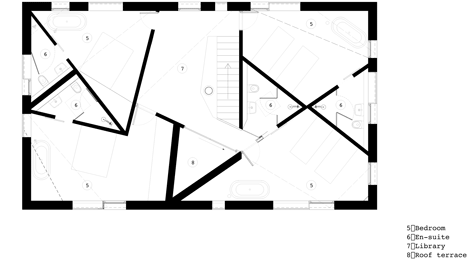
Click above for larger image
Location: Thorpeness, Suffolk, England
Building type: Holiday House
Client: Living Architecture
Size: 250 m2
Schedule: Completed December 2010.
Primary architects: Einar Jarmund, Håkon Vigsnæs, Alessandra Kosberg, Anders Granli.
Collaborating architect: Mole Architects Ltd.